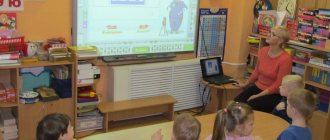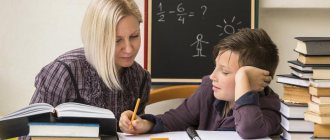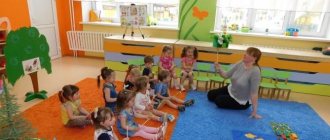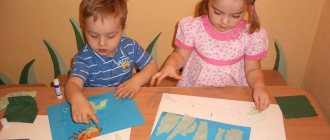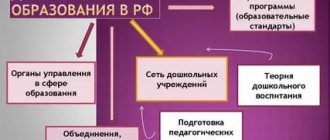Health-saving technologies in the modern educational process
The problem of health and a healthy lifestyle in modern society has become the main and priority task in strengthening the health and harmonious development of the child’s personality. The problem of student health is more relevant today than ever. At this point in time, it can be argued that the teacher can do a lot for the health of his students. A teacher can and should work so that the training and education of students does not harm the health of the students.
Health-saving educational technologies include the formation, strengthening of health and instilling in students a culture of health and healthy lifestyle standards.
Education and preparation for a healthy lifestyle of a schoolchild based on health-saving technologies should become the main focus of many in the activities of a teacher working with school students. The main work of pedagogical activity is carried out on the basis of a personality-oriented approach to students, which refers to those vital factors thanks to which students learn to live collectively [4, p. 36].
Preserving and strengthening the health of schoolchildren is the main component in the work of a teacher. V. A. Sukhomlinsky argued that “... caring for a child’s health is not just a set of sanitary and hygienic norms and rules...” and not a set of requirements for regime, nutrition, work, and rest. This is, first of all, concern for the harmonious completeness of all physical and spiritual forces, and the crown of this harmony is the joy of creativity.
Currently, as a result of the active reform of the Russian educational space, special attention is paid not only to improving the quality of the educational educational process, but also teachers began to pay especially close attention to the introduction of health-saving technologies into the system of the educational process, which contributes to the formation of a developed, educated personality of the student [2, With. 100].
The main goal of health-saving technologies of education and training is to provide the student with the opportunity to maintain and increase his health during the period of study at school, to develop in him the necessary knowledge, skills and abilities for a healthy lifestyle, and to develop the ability to use the acquired knowledge in everyday life.
The main task of the teaching staff of the Bobrovodvorskaya Secondary School at this stage of work is to prepare the student for independent life, to form a harmoniously developed, successful personality of the child, ready for the independent full life of an adult equipped with knowledge of a healthy lifestyle. If a person lacks health, this is unattainable. The foundation and foundations of the well-being of future generations, which the school lays and raises, should be based on protecting and ensuring the health of schoolchildren, on the formation and nurturing of a culture of a healthy lifestyle, which can only be achieved through health-saving technologies.
The goal of innovative health-saving technologies in schools is: to form the basis of a healthy lifestyle in students and to achieve the implementation of basic health-saving rules; develop an understanding of the basics of a healthy lifestyle; the ability to translate acquired knowledge into personal health self-preservation skills by students.
Health-saving innovative educational technologies are a systematic approach to training and education, built on the desire not to harm the health of schoolchildren
Intensive changes in the education system and innovative processes in the Russian school raise questions about preserving the health of schoolchildren.
Modern educational standards place high demands on school students, increasing the workload on them. In addition, during the school period, the younger generation grows rapidly; they are characterized by fatigue and fatigue in lessons and other types of educational and developmental activities. This problem can be solved by using innovative health-saving technologies, which will positively take care of the well-being of students [5, p. 82]
Currently, the problem of creating a healthy lifestyle is one of the most important in the system of education and training in modern pedagogical activities of schools. Teachers noticed that children who study at school have significant deviations in their health: impaired vision and posture, general fatigue, overwork.
Based on this, it was decided to introduce new approaches to organizing the educational process using innovative health-saving technologies in the classroom, informing schoolchildren so that they could make an informed choice in favor of a healthy lifestyle. Research confirms that the use of health-saving technologies, which are based on a comprehensive impact on students through relieving fatigue, increasing physical activity, liberation of judgment, and the use of choral singing, has made it possible to preserve and strengthen the health of students.
In the modern educational space, innovative health-saving technologies are implemented on the basis of a person-oriented approach. Carried out on the basis of personal development situations, they are among those vital factors through which students learn to live together and interact effectively.
The health status of modern schoolchildren in educational institutions largely depends on the organization of a specialized system of conditions in the school environment that contribute to the formation, preservation and strengthening of the health of students, the implementation of which is possible with the close interaction of specialists at all levels of educational and educational processes, introducing health-saving technologies into the educational process.
Proper organization of the educational process in an educational institution makes it possible to prevent overload and fatigue in schoolchildren, and also helps students realize the importance of maintaining health.
The modern educational system is aimed at preserving the health of schoolchildren. The task of teachers of an educational institution is aimed not only at giving children knowledge, but also at forming a successful student personality, ready to live a full life and further develop independently. And without health this is absolutely impossible. That is why innovative health-saving technologies are currently being implemented in schools.
A teacher can do even more for a student’s health than a doctor. It’s just that teachers must work so that teaching does not harm the health of students. In the lives of schoolchildren, the teacher occupies one of the main places; for them he personifies everything important and new, including being an example in matters of health care.
Pedagogy aimed at improving the health of children cannot be expressed by any one educational technology. These are all areas of health protection activities at school, taking into account the child’s living conditions and the most important characteristics of the educational environment.
A modern teacher must have professional qualities that will allow him to implement fruitful ideas for innovative health conservation of students, which will help ensure positive pedagogical results.
Health-saving innovative educational technologies are programs and methods that are aimed at nurturing in students a culture of health, personal qualities that contribute to its preservation and strengthening, the formation of an idea of health as a value, and motivation to lead a healthy lifestyle.
Teachers at our school implement health-saving technologies based on a person-oriented approach to students, depending on the age and physical stage of the school students. By implementing personal development situations that relate to vital stages and factors through which students learn the culture of human relationships and effective interaction among themselves. The active participation of the student himself is mandatory in the formation of health-preserving experience, which is acquired through the gradual expansion of students’ knowledge, their communication and activities, understanding and active positive life position of the student, based on the external educational process and self-education, the formation of responsibility for their health and life.
One of the important areas of health-saving education is the psychological comfort of the student in the educational process. In the lessons, the main task of preventing students from fatigue is solved, thereby creating a high incentive to reveal the creative talents and abilities of each individual student. An atmosphere of goodwill, attention to every answer and statement of the student, a positive mood of the teacher towards the desire for self-expression of the student, tactful correction of mistakes, acceptable appropriate humor and additional digression - this is the stock of pedagogical activity that a teacher has at his disposal, striving to reveal the abilities of each child as an individual, taking into account the characteristics of each student.
One of the priority areas for preserving student health is working with parents of students at our school. Work to strengthen and preserve the health of students is impossible without involving parents in it, since good communication between the school and parents is the main condition in a person-centered approach to education. Parents are invited to participate in class meetings, class hours, and conduct discussions on a healthy lifestyle.
The most important task assigned to parents is to monitor compliance with the student’s daily routine at home and a healthy, balanced diet. At school-wide and class meetings, teachers introduce parents to the basic principles of organizing healthy life support for children. Depending on how correctly and balanced the schoolchild’s nutrition is organized, his health, spiritual mood, ability to work and quality of educational activities, and physical condition of the body depend. If these tasks are solved successfully, a healthy, physically and spiritually strong, socially protected person grows up in the family.
In our school, work to create a healthy lifestyle is implemented through daily morning exercises, physical education minutes in the classroom, physical education classes, extracurricular work and play activities, work with parents and surrounding social institutions.
Preserving the health of children is the main thing that I pay special attention to when conducting educational activities and the main task of preserving the health of students, where students receive the skills of a proper daily routine and nutrition, sanitary and hygienic skills, disease prevention, a negative and negative attitude towards bad habits , knowledge of the physiology of your body.
Working with students of our school within the framework of the health-saving technologies program shows positive results: the lessons and additional activities taught to teach children to take care of their own health bring students a feeling of satisfaction, joy, and a positive attitude towards life. Children have become more responsible for their health and the health of others, and are becoming more patient and caring towards each other.
I believe that the use of health-saving technologies in the educational process of our school allows our students to more successfully adapt to the educational and surrounding social space, helps to form responsibility not only for their personal health, but responsibility for the lives and health of other people.
Literature:
- State youth policy in the legislation of the Russian Federation /Under the general editorship. prof. V. A. Lukova. Collection of documents. M.: Socium, 2000. - Part 1. - 248 p.
- Zakharova, T. N. Formation of a healthy lifestyle among junior schoolchildren / author. T. N. Zakharova and others - Volgograd: Teacher, 2007. - 174 p.
- Chupakha, I.V. Health-saving technologies in the educational process / author.-comp. I. V. Chupakha and others // Scientific and practical collection of innovative experience. - M.: Ilexa, Stavropol: Stavropolserviceschool, 2001. - 400 p.
- Smirnov N.K. Health-saving educational technologies in modern school. - M.: APK and PRO, 2002. - 121 p.
- Latokhina L.I. Wellness minutes. Simple and effective gymnastics for children and adults / - M.: AST: Astrel, 2009. - 158, (2) p.
Health-saving pedagogical technologiesmethodological development
Health-saving pedagogical technologies
This concept remains controversial; different authors have different interpretations of the concept of “health-saving pedagogical technologies”. The founder of the introduction of the concept of “health-saving educational technologies” into the practice of education is N.K. Smirnov, who argues that health-saving educational technologies can be considered as the technological basis of health-saving pedagogy, as a set of forms and methods of organizing the education of children without compromising their health, as qualitative characteristics of any educational technology based on the criterion of its impact on the health of the child and the teacher. The author writes that, as an adjective, the concept “health-saving” refers to a qualitative characteristic of any educational technology, showing to what extent the implementation of this technology solves the problem of preserving the health of the main subjects of the educational process - children and teachers; Health-saving technology can be considered as a “health safety certificate” and as a set of those principles, techniques, methods of pedagogical work that complement traditional technologies with health-saving tasks.
Health-saving pedagogical technologies include all aspects of the teacher’s influence on the child’s health at different levels - informational, psychological, bioenergetic.
1. organizational and pedagogical (determining the structure of the educational process, partially regulated in SanPiN, helping to prevent states of overfatigue, physical inactivity and other maladaptive states);
2. psychological and pedagogical (related to the impact that the teacher has on children; with psychological and pedagogical support of all elements of the educational process);
3. educational (including programs to teach how to take care of your health and create a culture of health, motivation to lead a healthy lifestyle, and prevent bad habits);
4. socially adapting and personal development (ensuring the formation and strengthening of the psychological adaptation of the individual);
5. therapeutic and recreational (therapeutic physical education and therapeutic pedagogy).
Any pedagogical technology must be health-saving; any influence on a preschool child must be based on the principle of health-saving. Health-saving technologies used in the practice of preschool education are technologies aimed at preserving, maintaining and enriching the health of the subjects of the educational process in preschool educational institutions: children, their parents and teachers. The goals of health-saving technologies in relation to a child are to ensure a high level of real health of the child and the formation of motivational attitudes towards a conscious attitude towards one’s health; in relation to adults - promoting the establishment of a culture of health, including a culture of professional health. Also, health-saving technologies are a system of measures that include the interrelation and interaction of all factors of the educational environment aimed at preserving the health of a child at all stages of his learning and development. The goal of health-saving technologies is to provide the child with the opportunity to maintain health, to develop in him the necessary knowledge, skills and habits for a healthy lifestyle.
In modern conditions, human development is impossible without building a system for the formation of his health. The choice of health-saving pedagogical technologies depends on the type of preschool institution, the length of stay of children in it, the program under which teachers work, the specific conditions of the preschool educational institution, the professional competence of the teacher, as well as children’s health indicators.
1 medical and preventive (ensuring the preservation and enhancement of children’s health under the guidance of medical personnel in accordance with medical requirements and standards, using medical supplies - technologies for organizing monitoring of the health of preschool children, monitoring children’s nutrition, preventive measures, a health-preserving environment in preschool educational institutions);
2. physical education and health (aimed at the physical development and strengthening of the child’s health - technologies for the development of physical qualities, hardening, breathing exercises, etc.);
3. educational (nurturing a culture of health in preschool children, person-centered education and training);
4. ensuring the socio-psychological well-being of the child (ensuring the mental and social health of the child and aimed at ensuring the emotional comfort and positive psychological well-being of the child in the process of communicating with peers and adults in kindergarten and family; technologies for psychological and pedagogical support of the child’s development in the pedagogical process of the preschool educational institution );
5. health conservation and health enrichment for teachers (aimed at developing a culture of health for teachers, including a culture of professional health, and developing the need for a healthy lifestyle); maintaining and stimulating health (technology of using outdoor and sports games, gymnastics (for the eyes, breathing, etc.), stretching, rhythmoplasty, dynamic pauses, relaxation);
6. teaching a healthy lifestyle (technologies for using physical education classes, communicative games, a system of classes from the “Health Lessons” series, problem-based games (game training, game therapy), self-massage); correctional (art therapy, music technology, fairy tale therapy, psycho-gymnastics, etc.)
7. Health-saving pedagogical technologies include the pedagogical technology of an active sensory-developmental environment, which is understood as a systemic set and order of functioning of all personal instrumental and methodological means used to achieve pedagogical goals. The essence of this technology lies not so much in modeling the educational space within the framework of an active sensory-developmental environment, but in the system of relationships between the teacher and children: the core of an active sensory-developmental environment is not a system of sensory didactics, nor a complex of working modes, but rather a system of subject-subject relations between teacher and student.
And it is this system that acts as the condition, means and result of the child’s formation as a subject of further development.
1. use of a desktop desk (working in the mode of changing dynamic poses), a landscape panel (situational-figurative modeling),
2. ophthalmic simulators (performing visual training),
3. visual material on a sensory-didactic suspension,
4. sensory-didactic holder (switching children’s vision from near to distant targets), etc.
Let's look at each of them.
- The secret of kindness is to give kindness to children, so that they themselves begin to give kindness to others.
- The secret of success (in business and in life in general) is the desire and willingness to give joy to yourself and others, in order to be able to always find reasons for joy, no matter how difficult life is.
- The secret to the effectiveness of efforts to create a health-preserving space is the professionalism of all teachers working in an educational institution.
- The secret of effectiveness is the purposeful cultivation of a culture of children’s health, the ability and ability to take care of their own health.
- The secret to ensuring that what is created corresponds to what was planned is objective tracking of the results obtained
- The secret of manufacturability is the creation of a working technology from the sum of disparate programs, techniques, and techniques is possible only if there is a unity of goals, objectives, principles and methodologies.
- The secret of truth is an intuitive feeling of the consistency of what is being done.
You can also define the basic principles (ideas) of health-saving technologies:
1. humanization - the priority of the personal, individual development of the child in the organization of the pedagogical process of the preschool educational institution;
2. taking into account the age and individual characteristics of the child - the use of primary diagnostics of healthy children, taking into account its results and the main neoplasms! age during the organization of a health-saving pedagogical process;
3. taking into account and developing the subjective qualities and properties of the child - observing in the organization of the pedagogical process the interests and focus of the child on specific types of activities, maintaining his activity, independence, initiative;
4. subject-subject interaction in the pedagogical process - freedom of expression and behavior in different forms of organization of the pedagogical process; during such interaction, the child can choose types of children's activities in which he could realize his maximum potential;
5. pedagogical support - solving a difficult situation together with the child using methods and techniques acceptable for a particular child, the main criterion for the implementation of this principle is the child’s satisfaction with the activity itself and its results, relieving emotional tension;
6. professional cooperation and co-creation - professional interaction between educators and specialists in the process of organizing a health-saving pedagogical process.
Health-saving technologies
| Concept | Definition |
| "technology" | is, first of all, a systematic method of creating, applying and defining the entire process of teaching and acquiring knowledge, taking into account technical and human resources and their interaction, which aims to optimize the forms of education. |
| "pedagogical technology" | - strictly scientific forecasting (design) and accurate reproduction of pedagogical actions that ensure the achievement of planned results. |
| “educational technology of health preservation pedagogy” | is the process of reproducing pedagogical actions from the arsenal of pedagogical and methodological tools within the framework of the “teacher-student” connection, carried out through the systematic use of forms, means and methods that ensure the achievement of planned results, taking into account the goals and objectives of health conservation pedagogy. |
| "health-saving technology" | - this is a system of measures that includes the interrelation and interaction of all factors of the educational environment aimed at preserving the health of the child at all stages of his education and development. The concept of preschool education provides for not only the preservation, but also the active formation of a healthy lifestyle and the health of pupils. |
| "health" | is a state of complete physical, mental and social well-being and not merely the absence of disease or infirmity. |
| "physical health" | - this is the perfection of self-regulation in the body, maximum adaptation to the environment. |
| "physical activity" | - the natural need of a healthy, developing organism to move (in childhood it acts as a prerequisite for the child’s mental development). |
| "mental health" | - this is a high consciousness, developed thinking, great internal and moral strength that encourages creative activity. |
| "mental activity" | — the need of a normally developing child for knowledge of the surrounding life: nature, human relationships; in knowing yourself. |
| "social health" | - this is moral self-control, an adequate assessment of one’s “I”, self-determination of the individual in optimal conditions of the micro- and macroenvironment (family, school, social group). |
| "social activity" | - manifests itself in behavior aimed at maintaining and following rules, in an effort to help their peers follow these rules. |
| "moral health" | - this is a complex of characteristics of the motivational and need-information sphere of life, the basis of which is determined by the system of values, attitudes and motives for the behavior of an individual in society. Moral health is mediated by human spirituality, as it is connected with the universal truths of goodness, love, mercy and beauty. |
Modern health-saving technologies
| Types of health-saving pedagogical technologies | Time spent in the daily routine | Features of the methodology | Responsible |
| 1. technologies for preserving and promoting health | |||
| Stretching | Not earlier than in 30 minutes. after meals, 2 times a week for 30 minutes. from middle age in physical education or music halls or in a group room, in a well-ventilated area | Recommended for children with sluggish posture and flat feet. Beware of disproportionate load on muscles | Head of Physical Education |
| Rhythmoplasty | Not earlier than in 30 minutes. after meals, 2 times a week for 30 minutes. from middle age | Pay attention to the artistic value, the amount of physical activity and its proportionality to the age of the child | Musical director. |
| Dynamic pauses | During classes, 2-5 minutes, as children get tired | Recommended for all children as a preventive measure against fatigue. May include elements of eye exercises, breathing exercises and others, depending on the type of activity | Educators |
| Outdoor and sports games | As part of a physical education class, on a walk, in a group room - small with an average degree of mobility. Daily for all age groups | Games are selected according to the age of the child, the place and time of the game. In preschool educational institutions we use only elements of sports games | Educators |
| Relaxation | In any suitable room. Depending on the condition of the children and goals, the teacher determines the intensity of the technology. For all age groups | You can use calm classical music (Tchaikovsky, Rachmaninov), sounds of nature | Teachers, psychologist |
| Aesthetic technologies | Implemented in classes in the artistic and aesthetic cycle, when visiting museums, theaters, exhibitions, etc., decorating premises for holidays, etc. for all age groups | It is carried out in classes according to the preschool education program, as well as according to a specially planned schedule of events. Of particular importance is working with families, instilling in children an aesthetic taste | All preschool teachers |
| Finger gymnastics | From a young age, individually or with a subgroup daily; | Recommended for all children, especially those with speech problems. Conducted at any convenient time (at any convenient time) | Educators, speech therapist, psychologist |
| Gymnastics for the eyes | Every day for 3-5 minutes. at any free time; depending on the intensity of visual load from a young age | It is recommended to use visual material, demonstration by the teacher | All teachers |
| Breathing exercises | In various forms of physical education and recreational work | Ensure the room is ventilated and the teacher give children instructions on mandatory nasal hygiene before the procedure. | All teachers |
| Invigorating gymnastics | Every day after nap, 5-10 min. | The form of implementation is different: exercises on beds, extensive washing; walking on ribbed planks; easy running from the bedroom to a group with a difference in temperature in the rooms and others depending on the conditions of the preschool educational institution | Educators |
| Corrective gymnastics | In various forms of physical education and recreational work | The form of implementation depends on the task and the number of children | Teachers, head of physical education |
| Orthopedic gymnastics | In various forms of physical education and recreational work | Recommended for children with flat feet and as a prevention of diseases of the supporting arch of the foot | Teachers, head of physical education |
| 2. Technologies for teaching a healthy lifestyle | |||
| Physical education lesson | 2-3 times a week in a sports or music hall. early age - in a group room, 10 min. younger age - 15-20 minutes, middle age - 20-25 minutes, older age - 25-30 minutes. | Classes are conducted in accordance with the program according to which the preschool educational institution operates. Before class, it is necessary to ventilate the room well | Teachers, head of physical education |
| Problem-based games (game training and game therapy) | In your free time, maybe in the second half of the day. time is not strictly fixed, depending on the tasks set by the teacher. | The lesson can be organized unnoticed by the child, by including the teacher in the process of play activity | Teachers, psychologist |
| Communication games | 1-2 times a week for 30 minutes. from an older age | Classes are structured according to a certain scheme and consist of several parts. They include conversations, sketches and games of varying degrees of mobility, drawing, modeling, etc. | Teachers, psychologist |
| Lessons from the “health” series | Once a week for 30 minutes. from Art. age | Can be included in the lesson schedule as cognitive development | Teachers, head of physical education |
| Self-massage | Depending on the goals set by the teacher, sessions or in various forms of physical education and recreational work | It is necessary to explain to the child the seriousness of the procedure and give children basic knowledge on how not to harm their body | Educators, Art. nurse, head of physical education |
| Acupressure self-massage | Conducted on the eve of epidemics, in the autumn and spring periods at any time convenient for the teacher from an older age | It is carried out strictly according to a special technique. Indicated for children with frequent colds and diseases of the ENT organs. Visual material is used | Educators, Art. nurse, head of physical education |
| Biofeedback (boss) | From 10 to 15 sessions of working with a computer for 5-10 minutes. in a special room. Recommended for older adults | It is necessary to comply with the rules of working on a computer. a special technique is recommended for pre-school children | Specially trained teacher |
| 3. Corrective technologies | |||
| Art therapy | Sessions of 10-12 lessons for 30-35 minutes. from middle group | Classes are conducted in subgroups of 10-13 people, the program has diagnostic tools and presupposes training protocols | Teachers, psychologist |
| Music influence technologies | In various forms of physical education and recreational work; or separate classes 2-4 times a month, depending on your goals | Used as an aid as part of other technologies; to relieve stress, increase emotional mood, etc. | All teachers |
| Fairy tale therapy | 2-4 lessons per month for 30 minutes. from an older age | Classes are used for psychological therapeutic and developmental work. A fairy tale can be told by an adult, or it can be a group story, where the narrator is not one person, but a group of children | Teachers, psychologist |
| Color influence technologies | As a special lesson 2-4 times a month depending on the assigned tasks | It is necessary to pay special attention to the color scheme of the interiors of preschool educational institutions. Properly selected colors relieve tension and increase the child’s emotional mood | Teachers, psychologist |
| Behavior correction technologies | Sessions of 10-12 lessons for 25-30 minutes. from an older age | They are conducted using special methods in small groups of 6-8 people. Groups are not formed according to one criterion - children with different problems study in the same group. Classes are conducted in a game form, have diagnostic tools and training protocols | Teachers, psychologist |
| Psycho-gymnastics | 1-2 times a week from older age for 25-30 minutes. | Classes are conducted using special methods | Teachers, psychologist |
| Phonetic rhythm | 2 times a week from a young age, no earlier than every 30 minutes. after meals, in physical education or music halls. ml. age - 15 min., older age - 30 min. | Classes are recommended for children with hearing problems or for preventive purposes. The goal of the classes is phonetic literate speech without movements | Teachers, head of physical education, speech therapist |
